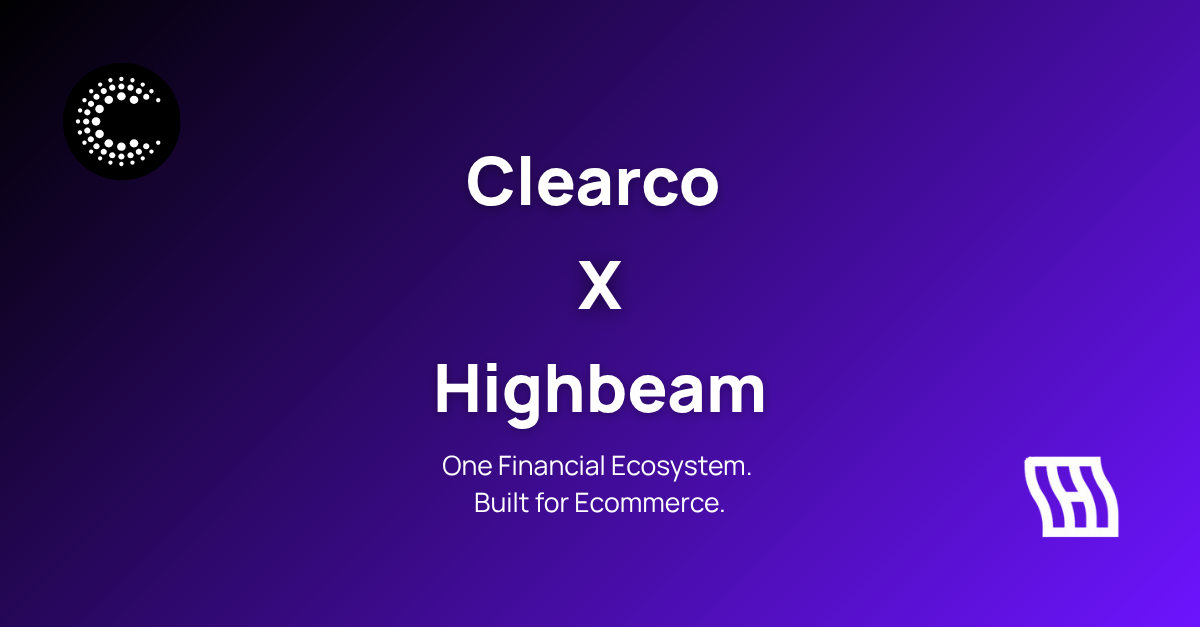What is performance marketing? A performance marketing guide

As a business founder, it shouldn’t matter if your expertise lies in marketing or not—performance marketing is a concept you should grasp. After all, performance marketing is a crucial component of any successful company’s marketing strategy, and it can be what sets you apart from the crowd.
Simply put, performance marketing refers to digital marketing and advertising strategies where the advertiser only pays when a specific action is taken. There are several different actions that are commonly measured, for example:
- Clicks on an ad
- Form signups from an ad
- Conversions—or sales—from an ad
We’ll go into more detail on that later. But, before we overwhelm you with information, let’s take a look at some of the common terms you’ll encounter when looking at performance marketing.
Common performance marketing terms
Advertiser
An advertiser, sometimes called a retailer or merchant, is the company that is marketing or advertising their goods or services online. Advertisers pay affiliates to create brand awareness, produce clicks on their ads, and bring customers to their website, among other things. As a business owner, you would be the advertiser in affiliate or performance marketing.
Affiliate
An affiliate, sometimes called a publisher, is any website owner that receives commissions for referring traffic, or leads, to an advertiser. Affiliates receive payment based on a previously agreed upon metric, such as clicks on an ad or conversions from their affiliate link.
Affiliate link
An affiliate link is a specific URL used on an affiliate ad to let an advertiser know from which affiliate their leads came. Affiliate links contain a unique ID which ties them to a specific affiliate so that advertisers can track which affiliates bring in which leads. These links are embedded in the text or graphics of an advertisement.
Affiliate marketing
Affiliate marketing is sometimes used interchangeably with performance marketing, but is actually only one piece of the performance marketing puzzle. Affiliate marketing is when a business, or advertiser, asks one or more affiliates to feature their advertisement or content in exchange for payment. The advertiser only pays based on how many leads interact with, click on, or convert from the advertisement shown by the affiliate.
Affiliate marketing agency
Sometimes referred to as an affiliate management agency, an affiliate marketing agency is an agency that manages an advertiser’s affiliate marketing. They’re typically paid with a percentage of the profits earned by the advertiser’s affiliate marketing efforts, or sometimes with a small management fee.
Affiliate program
Sometimes called a referral or partner program, an affiliate program is any program where an advertiser pays an affiliate a commission for generating sales, clicks, or leads
Average order value (AOV)
AOV is the average total dollar value of customers’ orders over a specific period of time. As an equation, it is expressed as revenue divided by number of orders.
Banner ad
A banner ad is a digital advertisement shown on a webpage. Banner ads are images rather than plain text, and are typically available in several standard sizes. In the context of performance marketing, an advertiser would pay an affiliate to show a banner ad on the affiliate’s website. Banner ads are usually found on the periphery of a webpage—on the top, bottom, or side of the main content on the page.
Behavioural targeting
Behavioural targeting is an online advertising technique where customers are targeted with ads based on their online behaviour. Examples of this behaviour include the websites a lead visits, purchases they make online, or terms they search on Google or other search engines.
Bid
Just like bidding at an auction, companies—or advertisers—bid on getting impressions like clicks and views. A bid is the maximum dollar amount that an advertiser is willing to pay.
Click-through
A click-through, or click, is as simple as it sounds: when a lead clicks on an ad that takes them to the advertiser’s website or landing page.
Click-through Rate (CTR)
The CTR of an ad is the total number of clicks on that ad divided by the total number of times that ad is shown to a lead. If an ad is shown 100 times and generates 15 clicks, its click-through rate would be 15%.
Conversion
A conversion is when a customer makes a purchase or takes another desired action, like opting in to receive marketing emails.
Conversion rate
The conversion rate of an ad is the total number of leads who make a purchase divided by the total number of leads who click through to the ad. If there are 100 click-throughs and 10 purchases from one ad, that ad’s conversion rate would be 10%
Cost per action (CPA)
CPA is the cost paid by an advertiser per specific action. Actions could include clicks, lead creation, or sales/conversions, among others.
Cost-per-click (CPC)
CPC is the cost paid by an advertiser per click on an advertisement or link that comes from an affiliate’s digital properties.
Cost-per-impression (CPI)
CPI is the cost paid by an advertiser per impression—or view—on an advertisement on an affiliate’s digital properties.
Cost-per-lead (CPL)
CPL is the cost paid by an advertiser per qualified lead. This could be based upon a lead entering their email address on the affiliate’s or advertiser’s website, for example.
Cost-per-order (CPO)
CPO is the cost paid by an advertiser per sales order.
Cost-per-sale (CPS)
CPS is the cost paid by an advertiser per sale that comes from an affiliate. This takes the tracking one step further than CPC advertising, because the lead has to click-through on the affiliate ad and then make a purchase on the advertiser’s website.
Customer acquisition cost (CAC)
CAC is simply the average cost to acquire a new customer.
Impression
An impression is a metric that represents how many times an advertisement, link, or product is shown to potential customers.
Landing page
A landing page is a web page made for customers to land on after clicking through a digital advertisement or link. If you’ve ever clicked on a digital advertisement, you’ve likely arrived on a landing page without even knowing it.
Lead
A lead is a prospective customer who has shown interest in an advertiser’s offering by filling out a form or providing personal information such as their phone number or email address.
Pay-per-click (PPC) advertising
PPC advertising is a form of performance marketing where an affiliate receives a commission for each click they send to an advertiser’s website. PPC advertising corresponds with the CPC pricing method.
Pay-per-impression (PPI) advertising
PPI advertising is a form of performance marketing where an affiliate receives a commission for each person who is served—or shown—an advertiser’s ad. PPI advertising corresponds with the CPI pricing model.
Pay-per-lead (PPL) advertising
PPL advertising is a form of performance marketing where an affiliate receives a commission for each lead created from an ad or link on their digital properties. PPL advertising corresponds with the CPL pricing method, and lead creation involves getting a personal piece of information from the lead, such as an email address or phone number.
Pay-per-sale (PPS) advertising
PPS advertising is a form of performance marketing where an affiliate receives a commission for each sale they send to an advertiser’s website. To receive the commission, the affiliate needs to send a lead to the advertiser’s site, who in turn makes a purchase on the advertiser’s site. PPS advertising corresponds with the CPS pricing method.
Referral fee
Referral fees are the commissions earned by the affiliate for producing impressions, leads, clicks, or sales.
Remarketing/retargeting
Remarketing, also called retargeting, is the process of identifying unique individual users and then advertising to those users. These users may have visited your website but not made a purchase, and you can target those users with things like display ads on affiliate sites.
Search engine marketing (SEM)
SEM refers to the process of improving your visibility and rankings on search engines. Common tactics include SEO and paid advertising, which includes paying to have your ads appear at the top of search engine results pages.
Search engine optimization (SEO)
SEO is the art of optimizing a website, or specific webpages, to make it easier for search engines to crawl the site or page(s). To optimize a page, for example, you’ll pick a targeted keyword that is relevant to the content featured on that page, and make sure that keyword and similar, helpful keywords are included. When SEO is done right, your website will appear at the top of organic search results on search engines like Google Search.
Urchin tracking module (UTM) parameters
UTM parameters are a critical part of tracking the success of your marketing campaigns—they’re short text codes added to URLs to help track the performance of a campaign in Google Analytics.
How does performance marketing work?
Now that we’ve covered some of the basics, you might be wondering how people end up seeing your ads. As you might’ve imagined, there’s a strategy behind performance marketing, so it’s not simply a free-for-all.
Before you start advertising, you’ll have to choose an online advertising platform. Different platforms have different benefits and targeting capabilities, so it’s important to do your research before throwing all of your budget into one platform. You’re likely familiar with some of the bigger advertising platforms, like Facebook and Instagram, the Google Ads network, or Amazon. This platform guide gives a helpful rundown of some of the top digital marketing platforms.
Segment and target your audience
While each online advertising platform has slightly different audience segmentation abilities, they all offer the ability to target your audience based on demographic information like age or location. If you’re new to audience segmentation and targeting, it’s simply when you split your audience into different groups, most often done via demographic information.
Depending on the platform, you can target based on factors like age, race, ethnicity, gender, marital status, income, and education.
Determine your bidding budget
It’s important to understand your performance marketing budget before you jump into the ring. Determine your budget as a part of your overall digital marketing budget, and let that guide your bid. As we covered earlier, a bid is the highest amount of money you’re willing to spend on a click, impression, or conversion.
In performance marketing, you’re bidding on keywords, not on ad space. If, for example, a user searches for “best lightweight t-shirt” on Google Search, and you’ve put a bid in on that keyword, your ad would appear if you won the auction.
How do you win an auction? By offering a higher bid than the other advertisers on that specific keyword. The tricky part is that you’ll never know who else is bidding on your same keyword, so you want to toe the line of bidding enough, but not too much. If your bids are far higher than those of your competition, you might make more sales, but you’ll be doing so in an inefficient way. Ideally, you’re only bidding slightly higher than your competition in order to retain a good return on ad spend (ROAS).
Ensure your ads are high quality and relevant
Humans are conditioned to be weary of advertisements, so advertising platforms are built to mimic this. The less interactions your ads see, the less relevant they’re considered by the advertising platform. For this reason, it’s important to make sure your ads are relevant and high quality.
Make sure your ads look good and professional, and also make sure they’re relevant. If you’re targeting the wrong audience or keywords, your ads are less likely to be a success. Remember, advertising platforms only get paid their commission if people interact with your ads, unless you’re paying for impressions. So, the more interactions on your ads, the more money the advertising platform makes, the more money you make through eventual conversions. The aim of the game is a mutually beneficial relationship.
Performance marketing channels
Performance marketing comes in many different forms, from native and sponsored advertising to affiliate and search engine marketing. Let’s take a look at some of the most common performance marketing channels.
Native advertising
Native advertising is a form of advertising where the ad matches the look and feel of the platform where it appears. Native advertising can come in a variety of forms, most typically in the form of an article, an editorial piece of content, or a video.
A common example of native advertising are the ads discreetly featured in email newsletters. As you scroll through the newsletter, you see blurbs about each news story, and native ads are worked in throughout the email or in a specific spot, like the top or bottom of the email.
Sponsored content
Sponsored content is a type of advertising where an advertiser pays for a brand or influencer to create content promoting their product or service. There’s a bit of overlap between sponsored content and native advertising, the main difference being that sponsored content is more like a media placement. Native advertising usually functions more like a traditional ad.
One common example of sponsored content is when a social media influencer—or even a public figure—shares a post promoting a company’s products or services. The influencer creates and posts the content in exchange for money from the advertiser.
Affiliate marketing
As we mentioned earlier, affiliate marketing is sometimes used interchangeably with performance marketing, and this is because affiliate marketing is an established and popular form of performance marketing. Affiliate marketing happens when an advertiser—trying to sell their products or services—pays an affiliate to send traffic to their website.
The affiliate earns a commission based on how many people they send to the advertiser’s website. But this commission isn’t always based on simply sending traffic to an advertiser’s site, it’s based upon an agreed upon metric. Some of these metrics would include clicks, lead creation, and conversions, among others.
Social media advertising
If you’re at all familiar with marketing, or even just social media, you’re likely familiar with social media advertising. Social media advertising is—as you may have guessed—the process of paying for your ads to appear on a social media platform.
Advertising on social media platforms is great for creating awareness, driving traffic to your website, and even making sales. After all, social media advertising capabilities have come a long way, with most social media offering the ability to make in-app sales.
One of the biggest benefits of advertising on social media is that each platform tends to skew towards a certain demographic. Looking at age, for example, TikTok is a great option for targeting Gen Z, while Facebook is better for targeting Boomers and Millennials, and Instagram captures Millennials and Gen Z.
Other popular platforms include Twitter, Pinterest, Snapchat, YouTube, and LinkedIn.
Paid search
Paid search refers to when an advertiser bids on keywords to have their ad appear on top of the rest of the organic search results. Google is ubiquitous when it comes to paid search, and they’ve made it quite easy for advertisers with Google Ads. Google Ads allows advertisers to promote their product or service across all of Google’s ad network, not just Google Search.
Paid search remains one of the most popular channels for advertisers, and part of that reason is the sheer number of users of popular search engines like Google. Another great reason is that users on any search engine have the right intent—they’ve come there to search for an answer, product, or service.
Final thoughts
It’s easy to become overwhelmed when starting to dive into a broad concept like performance marketing. Keep in mind that as an internet user, you’ve likely interacted with the majority of these types of ads. Now that you’re more familiar with the vast array of performance advertising options available, try to take note of which types of ads you come across in your daily life.
Performance marketing is omnipresent, and it should be a serious consideration for your business. That doesn’t mean that you need to try every single tactic right out of the gate—some channels might not work for your business. Review the different channels out there, find out which align with your goals and objectives, and keep your target audience in mind when deciding where to spend your money.
Start slow, experiment with the different options out there, and expand on the channels where you’re seeing success. You’ve got this!




